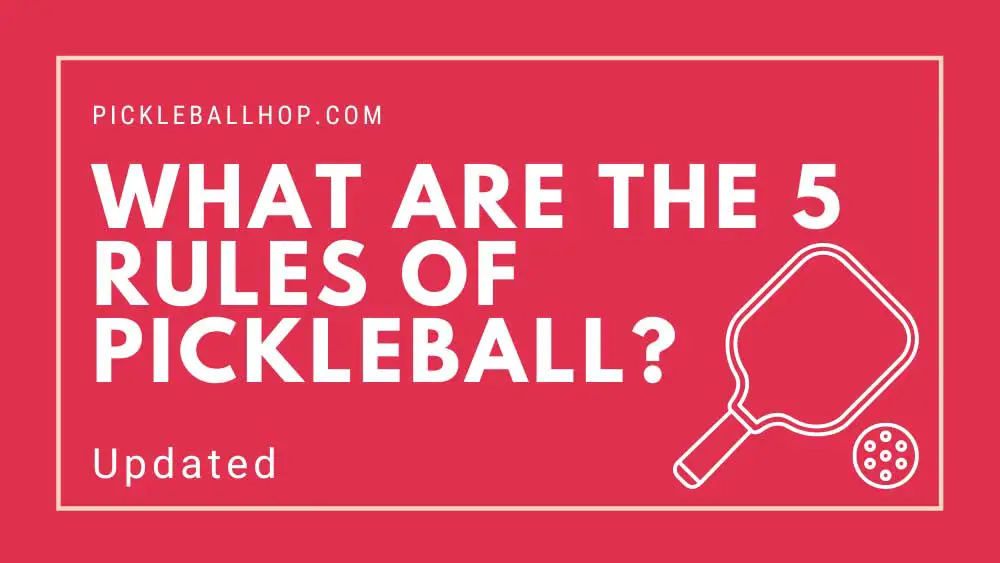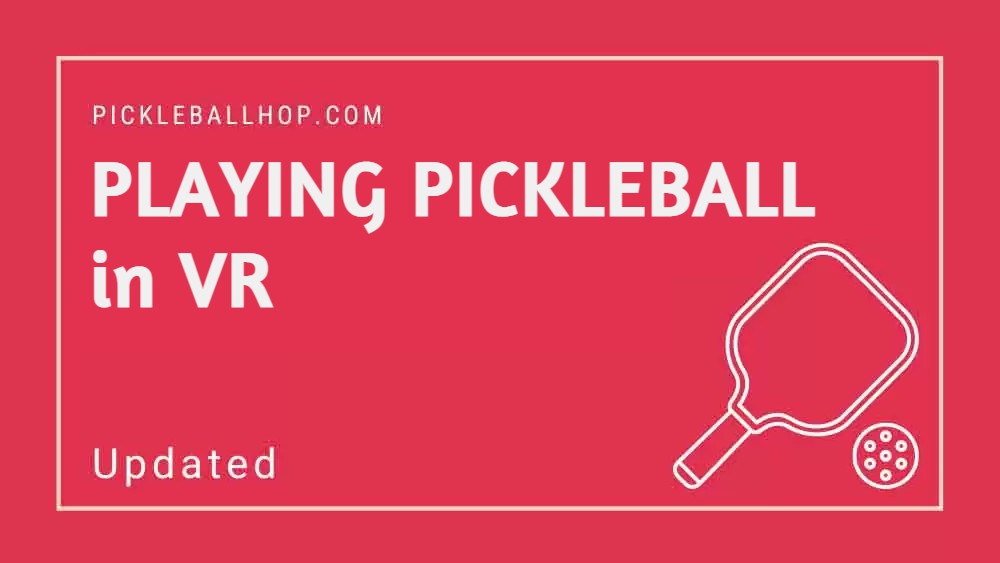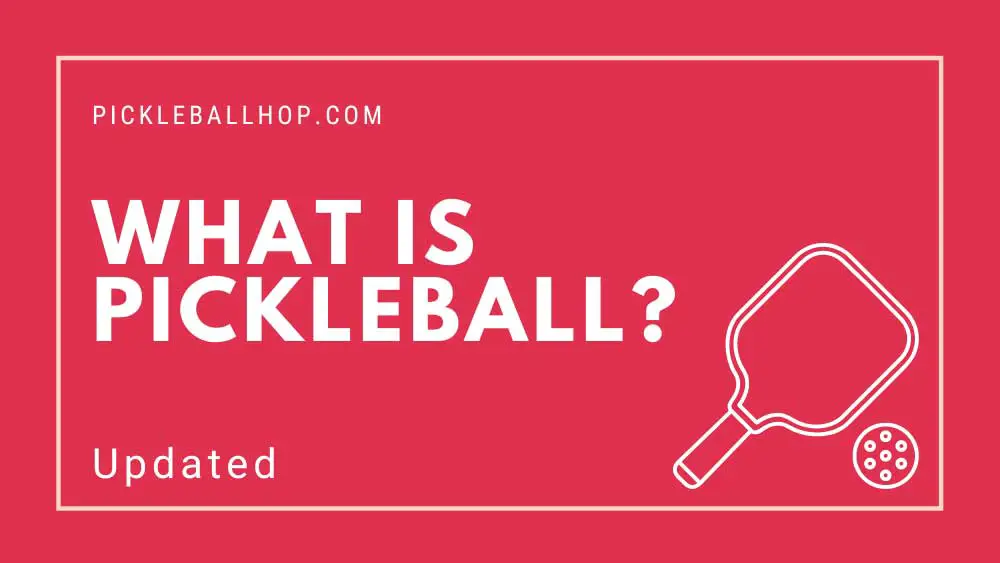Sports science professionals have become increasingly involved in training programs, resulting in the widespread use of drills.
As a result, pickleball drills are becoming increasingly popular among coaches looking to improve their students’ skills.
For those that wish to become competitive players in this great sport, Pickleball Drills for Beginners offers many benefits and are an essential component of achieving pickleball proficiency.
You can improve your pickleball skills as well as your cardiovascular and strength fitness by regularly drilling.
You are also likely to see improvements in your playing results due to your improved muscle memory.
What Is A Pickleball Drill?
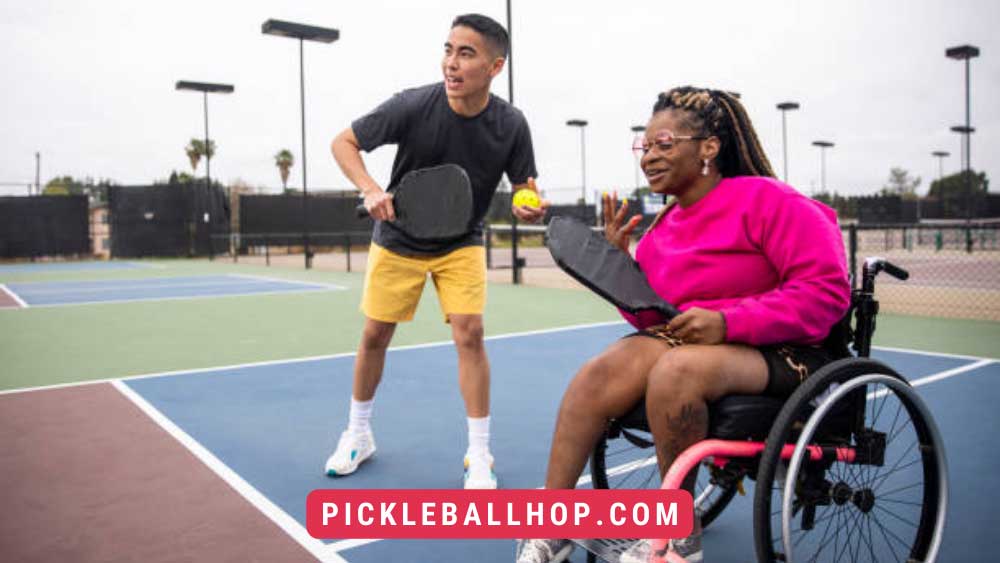 Designed to target specific skills or sets of skills that a player wants to improve, a pickleball drill isolates and works on those skills. This is essential because a drill gives you the opportunity to repeat the same stroke or a small set of strokes many times in a brief period of time, allowing you to develop the muscle memory necessary for the skill to become automatic.
Designed to target specific skills or sets of skills that a player wants to improve, a pickleball drill isolates and works on those skills. This is essential because a drill gives you the opportunity to repeat the same stroke or a small set of strokes many times in a brief period of time, allowing you to develop the muscle memory necessary for the skill to become automatic.
Pickleball Drills: What Do I Need to Know?
A player’s technique can be fine-tuned & honed by drilling various shots regularly. During a match, they are confident that a certain shot will pay off for them.
Under strictly controlled conditions, they practice basic movements back and forth repeatedly to become confident in their technique.
In drills, extraneous details are removed in favor of focusing on precisely what is required to perform a technique accurately and in control.
How should I drill these skills?
The first step will be to identify skills that are necessary to play well at pickleball; these skills must be present every time you go out to practice. Next, we will discuss the specific pickleball stroke skills and how they can be drilled.
You may enjoy reading Pickleball Drop Shot Drills
Core Pickleball Skills
 Stance, balance, and footwork for athletic success
Stance, balance, and footwork for athletic success
Rapid movement can be initiated quickly when the weight is evenly distributed over both feet in an athletic stance slightly wider than shoulder width. In order to move into position in a timely manner, you should keep your center of gravity lower to the ground and bend your knees.
It is still important to maintain a good dynamically balanced position of your body and paddle while on the move during a doubles match, for instance.
In order to maintain good form across the entire length of a game, and to maintain that over many games, you need strength and fitness. It is impossible to achieve this position in a game since drills will repeatedly stress you and constantly move you.
Playing a point during a game is far more taxing than hitting the ball between two players at either end of the net repeatedly. Playing so many shots in such a short period of time increases stress and leads to fast exhaustion. A successful shot requires you to keep your feet moving and organize your body with athletic movements.
You will get enough repetitions of just one type of shot to make it part of your repertoire of shots by focusing on one type at a time. Additionally, it’s essential that everything is done correctly during the shot as well as between shots. It is important not to ingrain poor technique in your mind.
Tiredness can lead to sloppy footwork and lazy shooting between shots. Keep your balance throughout all your movements when drilling. Make sure you are properly prepared for the next shot by returning to your athletic-ready stance between shots.
Composure
There is a lot of action in pickleball. One sloppy shot is all it takes to lose a point, so keep your focus on every shot.
Keeping your cool when shots you thought were winners are returned gives you the best chance of succeeding in the future.
When the conditions aren’t right for winning the point, it’s a recipe for disaster to hit the returned shots harder.
Practicing drills will help you maintain your composure by removing your ego from your game.
Additionally, never assess whether or not you will be able to get a ball. By practicing drills and games, you will be able to do this.
Try to make every shot no matter what, don’t think about it, just believe. The miracles you can achieve by running hard, sticking out your paddle, and doing your best to get it back over will surprise you. Those who oppose you will be shocked as well!
While you won’t make many of them, it’s good practice, and you might end up squeezing out a few extra points that could help your team win. Knowing that you never give up puts a tremendous amount of pressure on your opponents. This extra pressure will cause them to go for more shots and miss a few more. This happens all the time to me!
Reactions
There is room for improvement in response times. It is crucial to your success in pickleball that you recognize where the ball is and where it is headed.
It will go a long way to help you get to the ball on time and well by improving your hand-eye coordination and speed.
Counterattacks and defenses in particular will benefit from good reactions. In order to reach higher levels of play, you need to master these skills.
A wall drill is a great way to improve basic techniques as well as reactions.
Your depth perception and ultimately your game will improve when you keep the pickleball up, hit it harder, and move farther away from the wall.
It is not a good idea to start at such high speeds and distances that you are out of control. Gradually improve your skills by starting slowly.
Pickleball Drills: Are They Important?
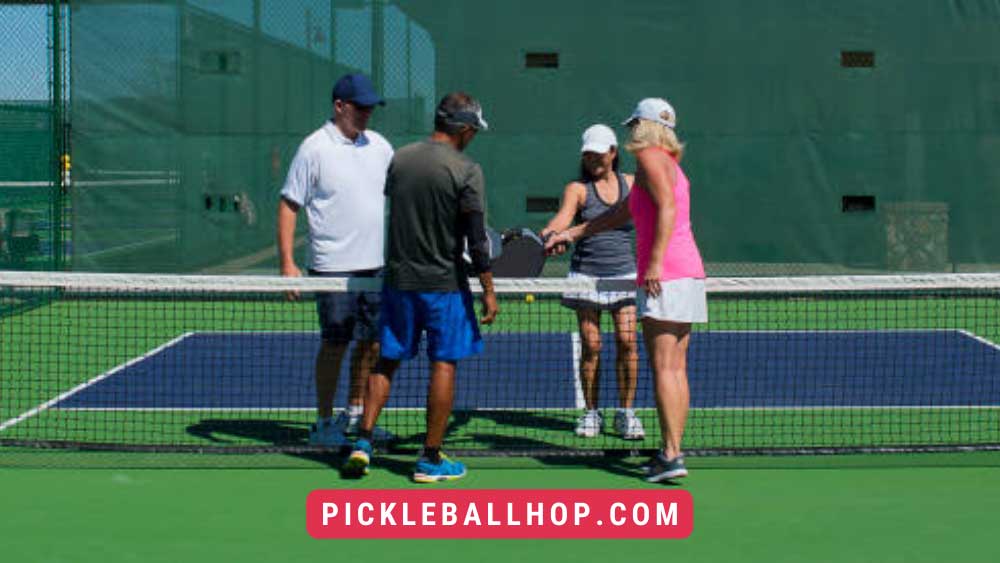 All aspects of a player’s game can be improved with pickleball drills by yourself, whether they are beginners or more advanced players.
All aspects of a player’s game can be improved with pickleball drills by yourself, whether they are beginners or more advanced players.
After mastering the basics, successful players go on to improve the core elements of the game. Pickleball beginner techniques must be practiced before more advanced aspects can be learned. Disappointment and frustration will only result from skipping over the fundamentals.
Practice will help you develop an understanding of when to use the various strokes.
With enough repetition, your body will learn how to position itself for the best effect, which will improve your reaction times.
In large part, how well you can execute a shot depends on where your feet are at each stroke.
The Basic Pickleball Strokes
For enjoyment and overall success with the game, it is essential to learn the different strokes and to know when to use them.
The Serve
Each point in the game begins with a serve. As the game is played underhand, players must be able to control the speed as well as the placement of their shots.
You are in total control of your serve since you throw the ball yourself and hit it yourself. Consequently, practicing is easy since there are no other players to compete with. If you practice your serve early and often, you will have a greater chance of success. The skill of serving can easily be leveled up without a partner if you have someone who can get the balls back to you while practicing their return. You can also read a guide on how to serve in pickleball by clicking here.
The best way to practice is to go outside with a basket of balls and serve as much as you like.
Tip: Hit DEEP serves as often as possible. If you play the game long enough, they will be of great service to you.
Groundstrokes
Groundstrokes are shots that are taken after the ball bounces once on the court.
In most cases, it’s hit around the baseline from the back of the court.
You can use a good groundstroke to move your opponent into a position where you can use other shots to win a point by hitting a good groundstroke that allows you to advance to the net.
In order to advance to the net behind it, you may have to hit a lot of groundstrokes.
When you practice the correct technique as a beginner, you will make sure the ball is taken slightly ahead of you, and that the paddle face is angled appropriately at contact in order to place the shot correctly.
The Return
A return of serve has its own name despite being basically a ground stroke at its core. This is due to its unique purpose in the game. You hit it after a serve and it is always the second shot of the point, which means you need to think about it differently than other groundstrokes.
Whenever you hit the return, you’re strategically at a very specific spot on the point, and the strategy you choose for this shot will dictate the type of shot that you use, as well as the technique that you use.
It is different from other groundstrokes because you typically follow the return into the net, if possible. You should use footwork patterns that will help you advance through the shot when you are drilling the return.
Dinks and Drops
To successfully deploy a winning pickleball strategy, it is vital to time these two “soft shots” during a rally.
There are two types of pickleball shots: soft shots and hard shots. Soft shots are those hit with more of a push or simple block motion rather than a full swing. These shots require a minimal amount of paddle movement. When you are at the net, you will usually use them to advance, set up attacks or to block and defend your opponent’s attacks. Click here to read a guide on what is a dink in pickleball.
In addition to helping you increase your chances of hitting the net, these soft shots also prevent your opponents from attacking you.
There is a low and soft shot that can be played from the non-volley zone (NVZ) called the dink shot. It has a soft arc that makes your opponent hit up on their next shot, which prevents an attack.
In and near the kitchen will be your target areas for these shots. Keep your opponents off balance by moving your dinks around in order to keep them guessing where you’ll throw them.
There is a major difference between a drop and a dink in that it is usually hit from further back in the court, such as near the baseline or in the transition zone. Since it’s being hit from further back, it will have a longer arc, and it should land just beyond the kitchen line with a low bounce, rather than in the kitchen (NVZ).
During setup and throughout the shot, this stroke requires a good feel for the ball as well as a great body position. Due to the speed at which the ball must be slowed down, quick reflexes and agility are essential to making these shots.
The Volley
The term volley refers to hitting the ball before it bounces on your side (out of the air). It is more common for volleyballs to be used offensively as part of an attack or as part of a setup.
You can win a point with a good volley by forcing your opponent into an error or by being the clear winner.
By striking the ball before it bounces, you speed up the game, put yourself in control and intimidate your opponents.
In order to hit a successful volley, it is essential to practice the correct swing and body position. The ability to play volleyball well is a key component of winning games.
You can improve your hand-eye coordination here by practicing hand-eye coordination drills.
The Lob
The term lob refers to a shot that is lofted vertically high in the air. Typically, when hit well, it shoots the ball high over your opponents’ heads and deep in the backcourt.
There is a lot of downside to a poorly hit lob, which makes it one of the more difficult shots to perform well.
In the event that your lob is shorter than you intend, your opponents may be able to use an overhead smash, which is widely regarded as the most offensive shot in tennis.
For you to lift the pickleball over your opponent’s head, you need good timing, accurate placement, and the ability to judge how much power you need.
The Overhead
A successful overhead shot involves a hard contact point above your head. A “smash” is also commonly used to describe it.
The ball is usually hit downward toward your opponent, or at an angle so that after it bounces, it ends up well off the court and away from your opponent.
A lobbed ball from your opponents presents you with this opportunity. The point can usually be won if you play it right.
To achieve this shot, you will need a complete motion, perfect body positioning, good timing, and accuracy. There’s nothing like hitting the ball perfectly. But when you miss-hit it, it’s frustrating.
Let’s take a look at some of the best pickleball drills now that we’ve covered what shots you need to learn.
24 Pickleball Drills To Up Your Game
 Beginner Player Backboard Pickleball Wall Drills
Beginner Player Backboard Pickleball Wall Drills
1. Basic Forehand Groundstroke
The fundamental forehand groundstroke is the shot made by hitting the paddle with one’s dominant hand (the hand that holds the paddle). Right-handed players should do the same. Left-handed players will use the forehand shot when the ball comes to their right side, and right-handed players will use the backhand.
This shot requires you to lead with your palm. Most players prefer this shot because they can lead with the palm of their hand, rather than the backhand, which requires you to lead with your backhand.
After hitting the wall, bounce it around the 5-foot mark from you, standing approximately 10 feet from it.
It’s important to hit the ball high enough so that when the ball reaches you after it bounces, it will be approximately thigh height. If you hold your paddle on the opposite side of your leg, use your non-dominant foot to step in.
To achieve the appropriate bounce for your height and distance standing, begin by hitting a point on the wall that is approximately the height of your chest and adjust the speed and height from there.
In order to begin the forehand groundstroke, make sure you turn your shoulders to get the paddle back rather than reaching back and using an abbreviated backswing and follow through.
The distance you can move from the wall increases as your skill level improves. When the ball hits the two, it will travel further and bounce higher so that you can catch it at a good height after it hits the three. As you move further away from the wall, you also need to turn your shoulders more and follow through more.
Moving your lead foot forward will help you angulate your body slightly ahead. Keeping your knees bent, aim for a slight lead with your shot.
2. Basic Backhand Groundstroke
As for your forehand shots, set up exactly the same way as for your backhand shots, but this time hit the ball on the left side of your body and lead the paddle with the palm of your hand.
Remember to bend your knees before touching the ball and stepping into it. Your foot should be on the same side as the paddle this time. You can learn more about backhand shots by watching the video below.
3. Forehand & backhand alternate groundstrokes
When you’re comfortable with both forehands and backhands separately, you can alternate between them.
Use each shot alternately. Forehand shots should be aimed to the left, backhand shots to the right (if you’re left-handed, the opposite should be done).
Your lead foot should change as you move from forehand to backhand since footwork is crucial.
Right-handed players advance on their forehand with their left foot, and on their backhand with their right foot.
To get these shots to come back at the same spot, you would hit straight at the wall when you hit them separately. To get the ball across your body, you must hit slightly off-center on each hit and then return it back to the same side.
4. The Serve
Target a 1 square foot box on the wall at about 2 feet above the height of the net. Your serve should be aimed within the box 20 feet back.
Drop serves (dropping from your hand and letting it bounce before serving) and traditional serves (throwing and hitting out of the air) both can be practiced. There will ultimately be a majority of people who will decide one way or another and stick with it.
Tip: Many professionals prefer traditional serves, but some beginners prefer drop serves.
5. Volley
In the boxed area, you can hit forehand volleys (no bounce) in the box if you leave the taped box in place. If there is already a mark on the wall, you can simply aim for it. Repeatedly hit the wall with the return rather than letting it hit the floor.
Take it slow and gentle at first. Often, at this stage (slow speed), people will hit directly forward.
At first, you should use a slower tempo for your shots in order to make sure that your shots hit higher of the wall and not at your feet. During the beginning stages, your shots will have a noticeable arc.
It won’t look like what you see on the courts, so you may wonder if you’re doing it right. What a great idea! As you progress, you will get there.
With an improved skill level, you can hit harder and lower down with less arc.
The speed and power of each shot will increase as you move away from the wall.
6. Groundstrokes and Volleys alternate
It’s easy to alternate between groundstrokes and volleys once you’re comfortable with both.
As you get more experience with hitting the ball against the wall, you will be able to comprehend the difference between how hard you need to hit the ball to bounce in front of you and reach a good height for another shot, and how hard you need to hit the ball out of the air to reach a good height for another shot.
Whenever you improve your skill level, move closer to the wall and then further away as you progress.
Intermediate Player Backboard Wall Drills
7. Spin
It is possible to add spins to all of the shots we have discussed. Then you can add topspin, underspin, and even sidespin to all your pickleball shots once you have reasonable control of the core shots.
Due to the wider arsenal of shots you now have, spin complicates your opponents’ shots and makes you a better player.
Add a spin to your game by choosing a type. Focus on hitting each shot with the spin you want by using all the drills we discussed above. Using all the different spins, you can repeat each drill.
Here is a video showing how to add spin to the ball using drills on the wall.
8. Short Hop Shots
Hit shots that land at your feet right after the bounce so you can practice hitting them immediately after they bounce. A short hop or half-volley is what is meant by taking the ball of the short hop.
In order to control these shots, you should extend your backswing as little as possible. It should be as close to no backswing as possible.
Position yourself parallel (imaginatively) to the wall, maybe five feet away or so. Allow the ball to bounce close to or on the line.
Many players will aim for your feet during play, so you’ll have to get good at dealing with shots that bounce near your feet. The reason this is a smart strategy is precise because these shots are a bit more challenging.
As you must angle up the shot sharply to clear the net, it is usually better to hit softly so that the ball lands in the kitchen and bounces low so your opponents cannot attack you.
9. Drops
Pickleball relies heavily on this shot. From the baseline to the net, this is the most commonly used shot.
Consider the wall as the net and the ball needs to land just beyond the net in the kitchen. As your shot approaches the wall, it should descend so that it lands short in the opponent’s court. Drop both forehands and backhands.
It’s best to alternate between a groundstroke and a drop to ensure a continuous hitting format, as the ball won’t return in such a way that it will drop the next shot.
Alternate between your forehand and backhand when you are feeling confident on both sides.
You can adjust the distance between the wall and the baseline in order to simulate drops from the baseline up to the wall (transition zone).
10. Dinking
A dink is a soft shot that is hit in the non-volley zone, or “kitchen”, of your opponent and should land in their kitchen or within a few inches of the line separating their non-volley zone. Forehands and backhands should be practiced separately approximately 7 feet from the wall.
Then you can alternate forehands and backhand dinks or move on to various combinations (e.g. 1 forehand, 2 backhands, repeat) to improve your ball control.
Adding challenge and complexity can be achieved by mixing up many of these drills. If you can handle more, that’s great. But make sure you are strong at the basics before moving on to more challenging tasks.
11. Walking Dinks
By hitting your dink (or any shot really) slightly in the direction you want to go, you can lead yourself in a given direction. If you have traveled about 10 feet in one direction, hit it back slightly in the opposite direction and travel backward. Count how many times you can go back and forth.
You will be able to develop your control by doing this.
12. Lobs
Practicing lobs close to the wall is a good idea. Often, you will make a lob while standing near the kitchen, so be sure to practice from a good height.
13. Backhands Only
Forehand drills are always done before pickleball backhand drills. Racquet sports and paddle sports are universally true.
The backhand generally takes a backseat to the forehand due to the tendency of players to favor the forehand.
For your backhand, you should routinely spend at least four different drill sessions only practicing the ones previously mentioned. Especially if you are not used to playing with a backhand.
A player who avoids his backhand will never become the player he aspires to become.
Advanced Player Backboard Wall Drills
14. Highspeed Volleys
As quickly as possible, hit forehands and backhands while maintaining continuity close to the wall. Both coordination and reaction times are improved in this way.
Lastly, alternate backhand and forehand volleys.
15. Forehand & Backhand Backspin Dink + Volley
To impart backspin, dink the ball off the wall and then volley it off the wall in a slight downward motion (emphasize on slightly). Upon impact with the wall, the ball will be thrown more downward with a backspin than if it hit the wall without spin. For a demonstration of backhand backspin, check out drill #7 for different spin variations.
16. Forehand & Backhand Topspin Dink + Volley
After dinking the ball off the wall and hitting it with a volley, brush up the back of the ball to impart topspin. Upon impact with the wall, the topspin will send the ball heading upward rather than downward.
17. Forehand & Backhand Sidespin Dink + Volley
When you dink the ball off the wall followed by a volley off the wall, use a slight outside to inside motion along the back of the ball to impart sidespin. It will be a bit harder for the ball to bounce back toward you after it hits the wall with a sidespin than if it had not hit the wall with no spin, so be aware of this and adjust the location on the wall accordingly.
18. Speed Control
Aim for a dink over the line after hitting one or two firm volleys at the wall. You can practice your dinking skills by playing this game or drill. A “reset” or a “block” is another term for this type of dink
19. Volley, Surprise Lob & Overhead
Start by volleying off the wall at high speeds, then throw in a lob and finish it off with an overhead smash.
20. Third-Shot Drops Shots With Spin
Drops are practiced as described in the drop drill above, except for this time you should use spin. Topspin and backspin are alternated.
21. Fake Out Attack
Instead of attacking with a high volley, hit a high ball and gently dink the ball over the line by reducing your paddle speed at the last moment. Practice this skill so you can surprise your opponent with a drop shot when they are expecting a hard drive. Players who defend well from the baseline can benefit greatly from this skill.
Advanced Pickleball Drills with a Partner
22. Fireball
During this drill, you will be practicing aggressive feeds that simulate ground strokes that are low in weight and controlled volleys that are high in power. As a volley, one player received an offensive feed from behind the non-volley zone line. A player starts from behind the baseline and feeds the ball.
It is important that the feeder maintains control of the feed while forcing the drill partner to make errors.
In order to prevent the feeder from approaching the net, the player at the net should volley deep.
There is a race to win the point between both players.
A feeder’s goal is to get to the net as soon as possible. In order to prevent the server from entering, the receiver must block it.
There is no limit to the number of people who can do the drill. You can do it down the line or crosscourt if you are playing with two people.
Then switch roles after 11 points have been scored.
23. Terminator
Two players stand at the baseline and feed one another a high ball that is easily attacked from the non-volley zone. In order to simulate an offensive third-shot drive, the baseline player steps in and plays an aggressive shot. In this case, the player on the baseline let the feed bounce.
Non-volley zone players should play the ball to their feet in order to keep the baseline player back.
The game continues on the other half of the court after the ball is returned.
On both the even and odd side, you can cycle down the line and crosscourt.
A player who receives the feed will attack, while a player starting at the non-volley zone line will defend and counterattack.
Switch roles after 11 points.
24. Survivor
A lob is fed from the baseline to the non-volley zone by the player at the baseline. In an attempt to put the ball away, the receiving player plays a smash.
Playing out the point and surviving are the baseline player’s jobs.
On one half of the court, the drill continues after the ball has been smashed.
The best way to practice this drill is to work it both down the line and across the court (even and odd sides).
Alternate roles until 11 points have been scored.
You may enjoy reading
- Best Pickleball Bags
- Best Pickleball Sets
- Best Pickleball Nets
- Best Pickleball Gloves
- Best Pickleball Shirts
- Best Selkirk Pickleball Paddles
Final Thoughts
It is the amount of practice a player puts into improving the necessary aspects of their game with the use of appropriate drills that makes the difference between mediocre and great players.
You can improve your pickleball skills by using the pickleball drills at home we have described here consistently.

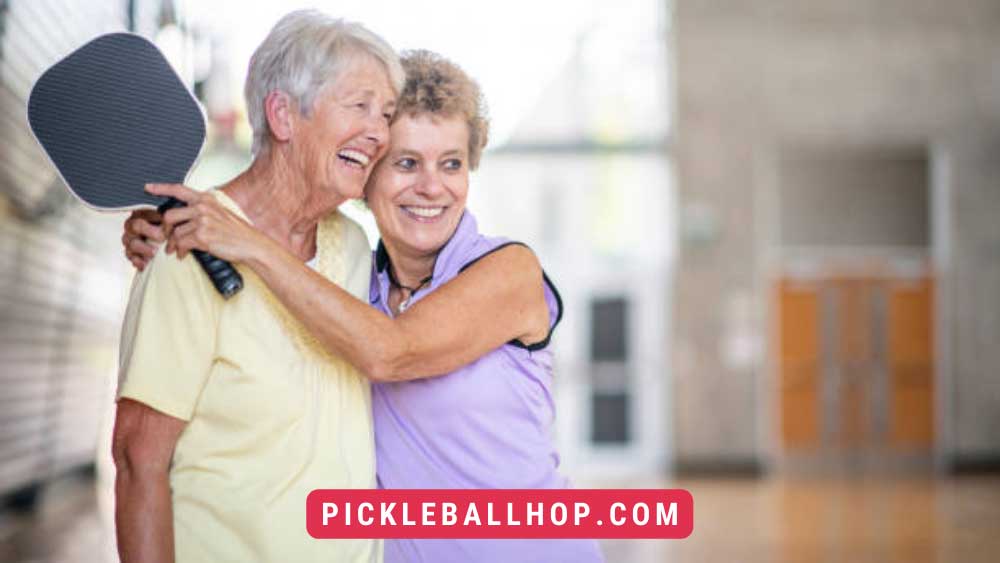 Stance, balance, and footwork for athletic success
Stance, balance, and footwork for athletic success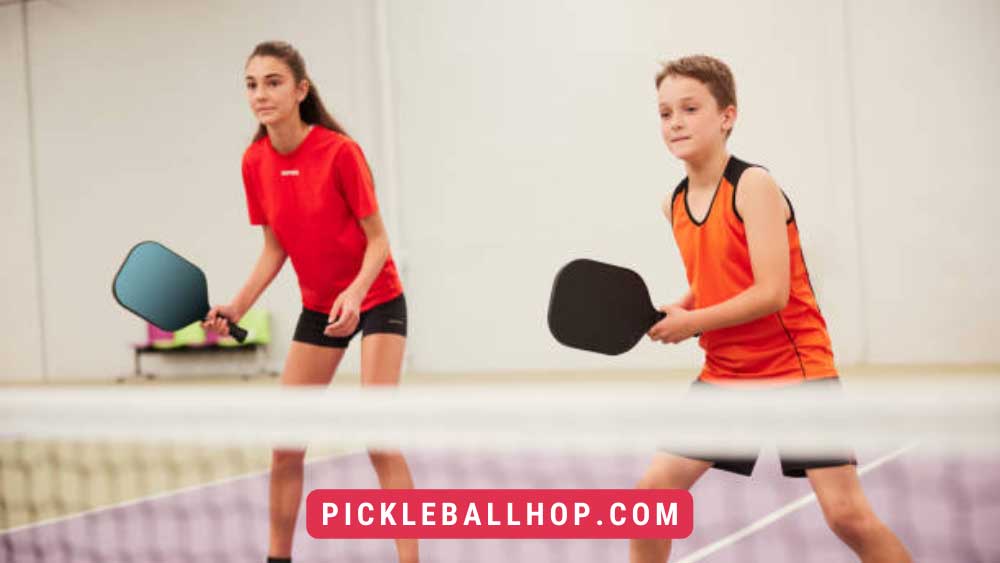 Beginner Player Backboard Pickleball Wall Drills
Beginner Player Backboard Pickleball Wall Drills